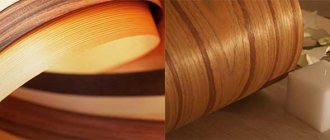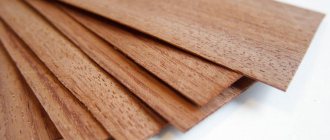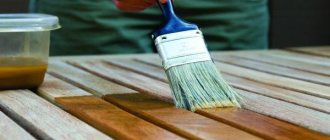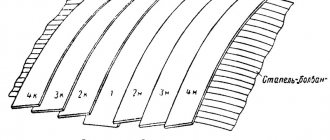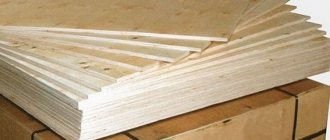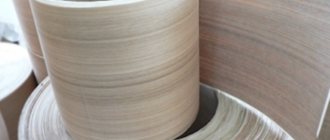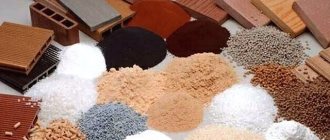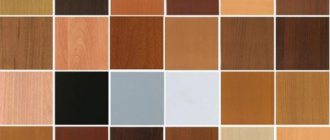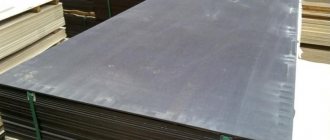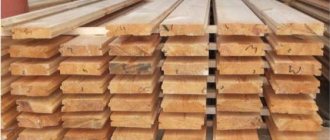Wood is the most environmentally friendly material, but products made from pure wood are very expensive, so most composite materials such as MDF, chipboard, and fiberboard are used for the manufacture of various items.
However, these materials themselves look unpresentable, and veneers of various types of wood give them an original and natural look. And consumers often don’t even realize that the product offered is not made from real wood.
What is veneer
Veneer is a material that is the thinnest sheet of wood, not exceeding a thickness of 10 mm, and obtained as a result of cutting from a round log or beam. The word itself is translated from the German language as “chips.”
The main advantage of this plate is that it retains the grain of the wood corresponding to the type of wood from which it is made. It is impossible to repeat the pattern of wood fibers artificially, because each tree, like a living organism, is unique in its own way.
Wood chips make it possible to significantly reduce the cost of products made under the guise of natural wood. If, for example, one cubic meter of wood can be used to make two chests of drawers, then from chipboard panels covered with veneer obtained from the same cubic meter of wood, ten times more similar products will be obtained.
Definition
Veneer is thin layers (sheets) of wood, their thickness ranges from 0.01 to 1 cm. They are used to glue the surfaces of furniture, room doors, panels, etc. for decoration using special adhesives that meet environmental requirements. As a result of veneer cladding, structures made of chipboard, fiberboard and other materials look beautiful and elegant.
Currently, many varieties of veneer are produced. For this purpose, valuable wood is used. It looks beautiful and gives furniture or other items the appearance of being made from real wood. The color of the veneer can be different - creamy white, dark chocolate, reddish, golden, etc. The pattern completely conveys the pattern of natural wood, which no technical means can recreate.
The type of veneer depends on the type of wood from which it is made. And this can be almost any wood used in industry. But more often than others, the following breeds are used for this.
- Nut. This material is of high quality. Therefore, walnut veneer is used in the production of musical instruments (grand pianos), furniture, and interior doors. The beauty of such products brings a special charm to the interior. The color of furniture walnut veneer varies from light beige to brownish brown.
- Cherry. Cherry wood veneer has interesting orange-brick tones. They are used to decorate luxury, expensive furniture.
- Oak. This type of veneer has increased strength and is used for carpentry work. Products finished with it will last a long time without being damaged. Oak veneer is expensive, but its high quality justifies the cost. Colors and shades range from yellowish-beige to dark brown.
- Maple. There are many varieties of maple used in the industry, and all of them can be used to produce veneers in the light shades characteristic of maple wood.
- Karelian birch. This veneer has an unusual, pleasant pattern and a beautiful pearlescent sheen. Its beauty will not leave even the most picky consumer indifferent.
- Pine. Light veneer is made from it, sometimes with a pinkish tint. Furniture with such a coating looks interesting and aesthetically pleasing.
Other types of wood are also used for the production of veneer. Veneer is made from larch, almost equal in strength and other properties to oak. It is not afraid of moisture and is resistant to rotting. The unusual pattern of annual rings gives it a decorative appearance. Beech, alder, ash, elm, aspen, poplar, fruit trees, etc. are also used. Sliced veneer is made from them in accordance with the requirements of GOST 2977-82.
GOST 2977-82 Sliced veneer. Specifications
1 file 49.82 KB
Types of veneer
According to the method used in its production, it is divided into:
- Peeled
- Planed
- sawn
Let's look at them in order:
Peeled
Peeled is obtained as a result of cutting from a round log, which rotates in a special peeling machine, clamped at the ends, while a long horizontal cutter, as it were, strips the log, removing thin plates from it.
Such material, after appropriate processing, is used to make multilayer plywood.
Planed
Sliced veneer is obtained as a result of planing wooden beams and is used in furniture production, for finishing various structures - doors, in the interior of car interiors, as a material for inlay.
This type is mainly made from coniferous and larch species and various growths on the tree, called burls.
sawn
Accordingly, sawn thin plates are made from round logs or square or rectangular beams, but using special saws.
Features of interior doors
The main criteria for choosing interior doors are color heterogeneity, low price, practicality and original design. It is the implementation of all these points that will help make the room light and harmonious and save the contents of the owners’ wallets.
To properly arrange your living space, you need to choose the right interior doors. Veneer, in comparison with other types of cladding, will most successfully cope with the task. Its indisputable advantages are its unique design, natural shades, high wear resistance, and the possibility of reconstruction without replacement. After treating the surface with a special varnish, veneered doors tolerate humid climates well and are easy to clean.
Veneer types
In addition to the above types, veneer is divided according to the method of cutting planed wood and is:
- Radial (R), when tree rings located in parallel completely cover the entire material
- Semi-radial (SR), in which case parallel stripes of growth rings can occupy 75% of the leaf area
- The tangential (T) planing method leads to the fact that the growth rings take the form of curved cones or simply curved stripes
- The tangential-end (TT) cutting method makes it possible to obtain a pattern of material where the growth rings appear in the form of closed ovals of irregularly shaped circles
The material is divided by appearance into front and back or left and right. The front side, as the name suggests, is the front part, where the top layer is denser than that of the back side. The reverse side may exhibit minor defects such as microcracks and looseness of the material structure.
The appearance of the material is also different and differs in the natural color and structure of the wood, which classifies it as a natural type. There is also color and fine-line. Colored is obtained by processing the material with dyes or stains.
Fine-line material, also called reconstructed or engineered, is obtained by pressing peeled plates into monolithic blocks and then sawing them into veneer of the required thickness. Another method of obtaining fine line is to make material from wood of those tree species that in nature quickly reach their maturity and are not considered expensive species.
Fine-line features
Products with a unique name, understandable to anyone who studied English at school, indeed have beautiful lines on the surface. The material is made from wood waste, as a result of which its cost is more affordable than that of first-class natural veneer. This type of veneer is also called reconstructed. Fine-line products are presented in an assortment, have a wide range of colors, and can easily undergo further processing.
The technological cycle for the production of reconstructed veneer includes the following stages:
- removal of plates on peeling machines;
- drying and sorting;
- impregnation with dye in containers;
- treatment with adhesives;
- pressing;
- formatting by planing.
Thus, the products are peeled and at the same time planed. The moisture content of the material should be in the range from 8 to 12%. The types of reconstructed fine-line plates with a thickness of 0.35...5 mm and a density of 450 to 600 kg/m3 are in greatest demand. The final product contains up to 94% natural wood, approximately 6% adhesive, and no more than 2% color pigments.
Fine-line coatings can imitate the texture of any wood species and create textile patterns, such as a satin surface pattern. Fine-line veneer has great plasticity and heat resistance, does not react to humid air conditions, and is easily varnished.
Production of peeled veneer
The resulting thin plates of wood are cut on a guillotine machine to a given size, and defective areas are removed. After this, the individual sheets are sent to another machine, where the knots are cut out, then the blanks are spliced together in the required size.
If multilayer plywood is produced, then the finished sheets are additionally glued together under a press at a temperature of 120 - 130 degrees.
Veneer drying is carried out in special chambers, which are divided according to the method of heat supply into convective, conductive and convective-conductive. During the drying process, it is necessary to maintain the horizontal position of the stacked sheets so that they do not warp.
Watch the video on veneer production:
Why should you order Karelian birch furniture from
Don’t miss the opportunity to buy furniture made of Karelian birch in Moscow by contacting Derevyagino specialists. By contacting our managers, you will receive the following benefits:
- Not only residents of Moscow, but also regional cities can buy first-class furniture made from Karelian birch from us.
- We manufacture products of any complexity and size, providing customers with a huge selection of standard projects.
- We have a team of talented designers who are always ready to develop a new project. They will include all the client’s ideas and suggest their own interesting ideas, adapting them to the existing or planned interior style solution.
- Our craftsmen are professionals in their field, as we and our customers have already been able to verify many times. They have extensive experience working with natural solid wood and create amazing things from it.
- We carry out careful quality control of both the materials used and finished products.
- We are manufacturers, and buying a product directly from the manufacturer means getting the best price and one hundred percent quality guarantee.
- We love our clients. It is beneficial for us that they come back again and recommend us to their friends. We do everything for this - we listen carefully, take into account wishes, carefully measure, work out details, check every little detail, quickly and efficiently manufacture, install, give guarantees, while keeping prices at a minimum level.
Thus, furniture made from Karelian birch is a magnificent decoration for a beloved lady or work office, which will delight with its beauty and will retain its original appearance for a long time. Have you decided to buy it? Just call us and we will do everything to make you satisfied.
Veneer bending
To obtain curved forms, the material of which is thin wood sheets, several methods are used:
- Material cuts
- Bending of glued solids
- Steaming
Sawing is carried out along the intended marks on the wrong side of the part and its subsequent bending. The method is quite simple and does not require much time.
However, with this technology, the strength of the manufactured structure may be reduced due to the fact that wood fibers are sawn. Making a solid structure in the form of an oval or circle in this way can be difficult or even impossible, as well as an element curved in opposite directions, since the cuts are made on one side of the part.
Bending of a glued veneer part is carried out if its thickness does not exceed 4 mm. The workpiece is placed in the template for a while until it takes its shape.
You can simultaneously glue sheets into a single mass and bend them. Here it is important to ensure that the fibers of individual lamellas do not go in the same direction, otherwise the rigidity of the finished product will not be sufficient.
For gluing, a composition based on epoxy resin, PVA, hide or polyurethane glue and others are used. The main thing is that they do not contain water-based solvents to prevent swelling of the wood. The glued part is placed in a template of the desired shape for a day.
The hydrothermal treatment method involves exposing the workpiece to hot water or steam. After steaming, the part is given the desired shape using a template in which it is kept until completely dry. In industrial production, bending is done by steaming parts in special chambers, after which the required shape is given using a press.
At home, you can hold the workpiece over boiling water or use an iron with a constant steam function. You can keep the workpiece in the bath.
The processing time with steam or hot water depends on the thickness of the workpiece, the bending radius, and in which direction relative to the wood fibers the bending occurs. For example, three-layer plywood with a thickness of each lamella of 1 mm and bent along the fibers will require 15-20 minutes of time for the steaming process. And the same workpiece, but consisting of five layers, will require an hour and a half of steaming.
Advantages and disadvantages
The advantages of oak veneer include the following:
- relatively low cost;
- large selection of wood textures and colors; compactness of finished products;
- resistance to decay processes;
- natural and environmentally friendly material;
- easy processing and good adhesion;
- beautiful appearance;
- resistance to temperature changes;
- reliable protection against water penetration;
- long service life.
However, like any material, veneer also has negative sides, among which the following can be highlighted:
- change in shade with prolonged exposure to sunlight;
- the difficulty of selecting a material with a similar pattern at the junction;
- impossibility of using aggressive chemicals.
A high-quality coating reliably protects the product from deformation and also helps create a cozy and comfortable atmosphere in the room.
Gluing veneer to base
There are three ways to decorate various objects with thin sheets of wood:
- Cold, using a press
- Hot
- Cold contact
In the first method, glue is applied to the surface of the base and the lamella blank is applied. Both parts must be fixed in a stationary position until the glue dries. We recommend using Titebond wood surface adhesive. It dries quickly and does not require strong pressing.
The second method is to use a hot iron or a special hammer called a “lapping” hammer. The base and lamella are lubricated with glue, after it dries well, they are connected to each other and drawn over the surface of the veneer with a hot iron.
Under the influence of high temperature, the adhesive composition begins to melt and gluing of the base and the wood sheet occurs. Here it is important not to spoil the texture of the lamella, for which they use sheets of white paper, which are placed under the iron.
When using the third method, you must remember that it uses glue, the drying time of which is limited. Therefore, it is better to paste small surfaces in this way, while maintaining high precision in applying the lamella to the base.
Immediately after the glue is applied and the part is attached to the base, you need to press it quite firmly for several minutes. This method is considered labor-intensive and complex, but it does not require the use of a press.
The choice of one or another method of veneering the desired object depends on its dimensions, geometric shape, and, of course, on the experience of the worker.
Veneer color
The uniqueness of this material lies precisely in the fact that there are a huge variety of colors, textures and textures, just like the types of wood available on our planet. There are up to 200 species of trees growing in different parts of the Earth, from which this finishing material is produced.
All shades of brown, yellowish, red-brown, almost white and even black can be found in the catalogs of those companies that sell veneer or veneered products.
For example, a South American tree called “Purple Tree” has violet-colored wood when cut, curly maple is almost white, Ziricote tree is almost black, walnut produces wood of a dark brown hue with a texture reminiscent of noble marble.
It is simply not possible to list all the colors and shades in one article. In addition to color, wood differs in the pattern that is created on the veneer. These can be various wavy lines, circles and ovals, “eyes”, dots and other inclusions of various shapes.
Which doors are better veneered or film eco-veneer, PVC
Veneer or eco-veneer, now the choice often sounds like this. We have already talked about the advantages of ecopon, how durable it is, how well it conveys the appearance of natural wood and the price is not high. And against this background, sellers, selling their doors, often begin to offend products made from natural veneer, such as expensive, fragile, afraid of moisture, scratched, everything will fall apart, etc. We don't agree with this.
Yes, eco-veneer is cheaper and maybe better able to withstand impacts and scratches, but that’s all. The main advantage of natural veneer is that doors made from it actually look better, they are natural, this can be seen immediately, many cannot be distinguished from the most expensive doors made of solid oak or ash. No matter how high-quality the film material is, in any case it is clear that it is a fake wood, and not the wood itself.
Door with gray eco-veneer for flooring
Further down the list. Are veneer doors afraid of moisture? In the previous paragraph, we did not specifically talk about what is used to cover the veneer on finished products. It is tinted to the desired shades and covered with protective compounds, varnishes of various types, which, by the way, are no worse in strength than films.
Veneer is painted, and paint is also an excellent barrier to moisture. All this is done with already assembled doors, i.e. cover them entirely, without seams or gaps. Therefore, the surface of the door leaf is protected no worse than that of eco-veneer.
Veneered door in the bathroom
If you imagine that the doors are installed in a small bathroom, where condensation periodically flows over all surfaces, then the situation is the same for veneer and eco-veneer. All untreated areas of the door block will be the first to take the blow: the upper and lower ends of the door leaf, the cuts and reverse sides of the trim, frames and extensions.
And in this case, this is where problems can begin: MDF will begin to absorb moisture, swell, and accordingly the coating in this place will begin to peel off (any coating, no matter veneer or eco-veneer). To protect against this, you need to thoroughly coat all these places with varnish before installation.
Also, it is better to lubricate the insertion points of fittings (handles, locks, screws, hinges) before installing them
To protect against this, you need to thoroughly coat all these places with varnish before installation. Also, it is better to lubricate the insertion points of the fittings (handles, locks, screws, hinges) before installing them.
Exposed door in the bathroom
Now about strength and unsticking. As we have already said, when veneer is applied, it is so firmly connected to the base that it literally becomes one with the frame, if, of course, everything is done well. Therefore, even with very strong mechanical damage, this sandwich behaves as one whole.
Even if a whole piece of material is torn out of the surface by something heavy and sharp, the veneer will not continue to peel off (as happens with a film coating), but will behave more like natural wood. Therefore, such damage on veneered doors can be restored, for example, with mastic in the color of the coating, which cannot be said about film doors.
Sliding door with large mirror in wenge veneer
Another advantage of veneered doors is their heavier and more durable construction. Because veneered doors themselves are more expensive than eco-veneered ones, but manufacturers make the door leaf and moldings of higher quality, more durable, without voids and honeycomb filler. This point must also be taken into account when comparing, and not just the beauty of the coating.
But veneer has one unexpected drawback: it fades in the sun, which is the price to pay for naturalness.
DIY furniture and other wood products: drawings of benches, tables, swings, birdhouses and other household items (85+ Photos & Videos)
Inexpensive veneer
Any product made from pure wood will be many times more expensive than its veneered counterpart if it is a natural material obtained by peeling or sawing a solid log.
A completely different situation arises with the material called fine line. It perfectly imitates a natural product and at the same time has a number of significant advantages.
First of all, this is a price that is lower than that of natural wood sheets, since inexpensive tree species are used for the production of fine line, mainly fast-growing in the area where the engineered finishing material is produced.
It is well processed with dyes and pigments, as a result of which you can obtain the most unimaginable colors and shades that imitate the most expensive types of wood.
How reconstituted veneer is made
The log is dissolved on the machine into raw materials of a certain thickness, after which it is cut to specified sizes. If the workpieces do not require painting, they go into the drying chamber.
Otherwise, the cut sheets are dipped into containers with dye, where the material is dyed throughout its entire thickness. The painted sheets are also dried and then glued together.
The number of elements to be glued is determined by the required pattern of the finished veneer. The sheets to be glued are placed under a high pressure press. The result is a monolithic block of wood, from which veneer is subsequently sawed to the required thickness.
The good and bad of natural veneer
Natural veneered furniture or other products differ from their artificial counterparts, first of all, in their high cost, which is still lower than solid wood products. But that's not the main thing.
The main disadvantage of veneered coatings is that the products are difficult to maintain. They cannot be wet, and for cleaning you need to buy special products. Naturally, such products should not be used in rooms with high humidity.
They are also less resistant to mechanical damage, even slight ones. An example is inaccurate drilling of holes (countersinking) in a veneered plinth, when it is necessary to resort to additional repairs (see the article How to fix a plinth, last section).
Veneered MDF panels
Let's figure out what veneer and MDF are. Veneer is a thin section of wood. It is obtained by sawing or peeling timber, most often elite varieties, for example, oak, elm, maple, walnut and others. In appearance, veneered MDF is very similar to the wood of valuable varieties of trees. However, the cost of such furniture is much lower than furniture made from solid boards. The primer and varnish with which the veneer is coated reliably protects the material from mechanical damage, and also makes the furniture more noble in appearance.
Designers love veneer for its wide possibilities for implementing creative ideas, as well as for the natural origin of furniture and interior design in general.
There are several types of coatings for veneered products, for example, polyurethane varnishes applied by spraying, or acrylic varnishes applied by a roller method. Such paints and varnishes not only make the product more aesthetically pleasing, but also form an ideal surface. Also, veneer can be painted during the varnishing process, which is not applicable for already manufactured synthetic finishing materials. After varnishing, the furniture becomes matte or glossy. Complex geometric patterns can be applied to the veneer surface. If damage occurs on the furniture, it can be quickly removed. However, the main positive difference between veneer and other finishing materials is its high level of environmental friendliness.
The disadvantages include the rather high cost, but it fully reflects the high quality of the material.
The MDF board itself is made from fine wood chips, which are pressed at elevated temperatures and under high pressure. No additional materials are used to glue the particles. At high temperatures, lignin is released from wood - this compound is completely organic and does not pose a danger to human health.
What can be made from such material, besides furniture? Various veneered products are perfect as finishing materials. Construction supermarkets sell a variety of profiles, panels, and skirting boards that will be an excellent addition or even the main accent of the interior of your apartment.
With the help of such panels, you can finish all the walls and ceiling, or you can do this partially.
Often, from all profiles of this type, cornices, baguettes, as well as veneered MDF plinths for the floor or ceiling are used. They combine well with other finishing materials, for example, decorative plaster, stucco, wallpaper or laminate.
Walls finished with veneer will become the highlight of any interior. Today this type of finishing is very popular. Veneer is valued primarily for its versatility. The scope of use of veneer is very extensive. It is used for finishing walls, flooring, creating furniture and doors. In addition, this material is often used on yachts, terraces, offices and even the interiors of expensive cars.
The second advantage is environmental friendliness. Natural finishing materials do not pose a risk to human health, they do not cause allergies. Wood motifs always look expensive and elegant.
There are a huge number of shades and textures of veneer panels. Unique panels, mosaics, and inlays are made from veneers of different types of timber.
The advantages of veneer also include:
- easy care. You just need to wipe the veneered elements with a napkin without using detergents or cleaning agents.
- light weight. Such materials are much lighter than similar ones made from solid boards
- rational use of natural materials. Much less wood is used to make veneered furniture. Therefore, by buying such furniture, you are saving the forest.
Application area of veneer
Multilayer plywood and matchboxes are produced from thin plates obtained by peeling; they are glued onto MDF, fiberboard and chipboard bases, and lined with plasterboard and other hard surfaces that need decoration.
Veneer obtained by planing wood is used in finishing carpentry, making furniture and door facades, sports equipment, and as an independent finishing material.
Sawn coating, as a high-quality material, is used for finishing works of art, musical instruments, expensive premium doors, luxury parquet, decorative wall panels, chests of drawers, caskets and other household items. Even bent structures can be constructed from such material - arches, window frames of non-standard shape, elements of stairs.
Thin plates of wood of various species are used in such an art form as inlay, where one of several directions is “marquetry” - a type of special mosaic when fragments of veneer of various colors and textures are cut into a veneer base, which is subsequently glued to the object being finished.
Inlaying with pieces of thin wood is also possible using the intarsia technique, when the fragments are cut not into the veneer base, but directly into the solid wood of the product.
The “parquetry” technique involves gluing pieces of veneer of strict geometric shape onto paper, which is then glued to the product.
Wood for veneer
The use of one or another natural finishing material depends on the area of its application, because different types of wood have different characteristics in terms of strength, ductility, pattern, and structure. The most common tree species from which thin wood sheets are made are:
- Oak. There are many varieties of this tree - European, American, swamp, knotty, silk. And this is not counting the various sections of the tree trunk - places of branching, with growths that give truly unique structures and patterns of wood. Oak is a very strong and durable wood, ideal for cladding parquet boards, doors, and some types of furniture. Color varies depending on the species from almost white to dark brown
- Walnut also comes in several types - American, European, Californian. The color of the material is predominantly dark brown. Plastic wood can bend. Used for the production of furniture, doors, musical instruments
- Maple – folded, sugar, figured (sycamore), white, European. Gives wood from almost white to all shades of light brown
- European and American cherries. The color of the wood is light reddish brown. Used in the manufacture of luxury furniture
- Wenge. The wood of this African tree has recently been widely used in the manufacture of flooring, furniture, and doors. The color depends on what part of the barrel is used, from light brown to almost black
- Karelian birch is valued in furniture production due to the beauty of its wood when cut
- Pine produces light-colored wood, even a pinkish color is found if the sapwood of the trunk is taken. Used primarily for furniture production. This is only a small part of all tree species from which veneer is produced.
Is there stone veneer?
It turns out that it happens. It consists of thin sheets of stone obtained by cutting slate stone. The thickness of each sheet does not exceed 2 mm. The plates are connected by using special resins containing fiberglass.
This unique and completely natural material is used as a finishing for MDF boards, chipboards, plasterboard and other surfaces. The different patterns of slate, changing its shade depending on the lighting, and the somewhat rough surface allow you to create a beautiful finishing material, one of a kind.
Below is a video about stone veneer:
